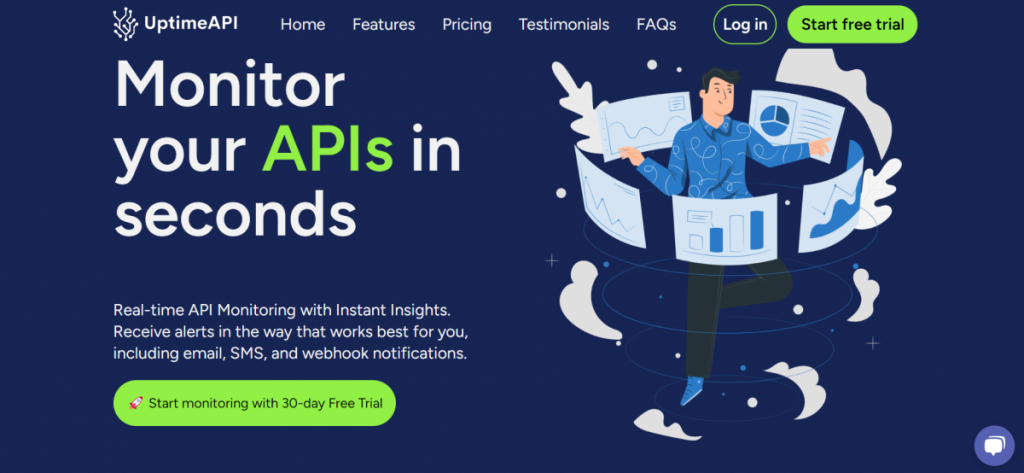In the digital age, where online presence is paramount, the uninterrupted availability of APIs and web services is critical. Downtime can lead to lost revenue, damaged reputation, and frustrated users. To safeguard against such pitfalls, Uptime API emerges as an invaluable tool. This quick guide will walk you through the essential steps of harnessing the power of API Monitoring for optimal API performance.
What Is Uptime API?
Uptime API is a monitoring tool that assesses the availability and responsiveness of a service or application. It plays a crucial role in ensuring that applications are accessible to users without interruptions. Key metrics tracked by the service include response time, indicating the speed of application responsiveness, and downtime instances, identifying periods when the service is unavailable. The mechanism of the service involves continuous monitoring and data collection, providing real-time updates and alerts to stakeholders.
How to Utilize Uptime API Effectively
To effectively utilize Uptime API, it’s vital to select the right uptime monitoring service that aligns with your application’s needs. Configuration is a key step, involving setting up monitoring parameters and customizing alerts and notifications based on your preferences. Analyzing Uptime API data involves interpreting response time metrics to gauge performance and addressing downtime incidents swiftly and efficiently.
Best Practices And Tips For This Service
Incorporating Uptime API into your workflow requires following best practices. Regular monitoring and trend analysis help in identifying patterns and predicting potential issues. Adopting a collaborative approach in incident resolution ensures a coordinated effort in tackling downtime effectively. Scalability and adaptability of monitoring strategies are crucial to cater to the evolving needs of your application.
How To Monitor APIs With Uptime API?
Follow These Steps
1: Create an account on the Website.
2: Complete the required details in the registration form. You can also, register with Google or GitHub.
3: After signing up, you will receive a verification email.
4: Choose one of the 3 available plans (basic, pro, and plus). There is a 30-day free trial period.
5: When you’re done, click on “Monitors” and then click on “New Monitor”. Complete the required data: API’s name, URL, HTTP Method, etc.
6: Finally, click “Create” and the service will monitor the API, by regularly checking the status.
Finally, you should know that this service includes an incredible offer! You will be able to use this service for free for a month (30 days)! In this way, you can experience the benefits of this service before committing to a subscription.
Watch this interesting video. It will teach you how to monitor your APIs.
Uptime API stands as a pivotal tool in guaranteeing application reliability and availability. By embracing effective usage and integration strategies, businesses can ensure a seamless user experience, ultimately contributing to the success and reputation of the application in a competitive digital landscape. Stay proactive, monitor diligently, and optimize performance with the insights provided by the tool. Definitely, it’s the best API Monitoring.
You can also take a look at this interesting post: Top Rated WhatsApp Phone Number Verification API For Worldwide Developers



